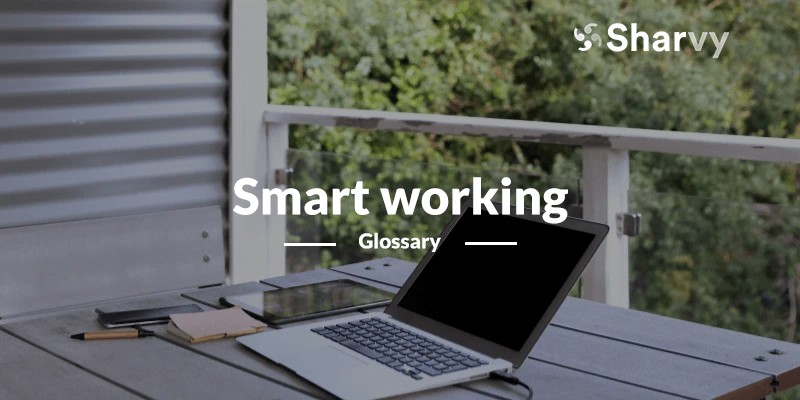What is smart working ? – Definition
Smart working echoes the notions of flexibility and agility now dear to companies and their employees. It revolves around four concepts : space, time, technology, and people.
- Space : by opting for smart working, the employer no longer restricts employees to the physical limits of the company or a table and a chair. So desk sharing is often the order of the day in this type of organisation. It is essential to get the job done, regardless of where it is done.
- Time : one of the aims of smart working is to offer greater flexibility by letting employees manage their schedules and timetables as they see fit. This is done without forcing them to deal with everyday issues such as transport times: a win-win strategy.
- Technology : new technologies are creating new (and more efficient) ways of working together, optimising processes and speeding up projects within the company. That’s why employers should pay attention to this aspect and offer employees nomadic equipment and the right tools to get organised, like Sharvy.
- Employees : by promoting autonomy, trust, and well-being, employers who opt for smart workplace people are at the heart of their strategies. The company can boost its talent’s satisfaction, commitment, productivity, and retention with these conditions.
What are the advantages of smart working?
Smart working offers several advantages for both companies and employees.
For employees, smart working offers :
- Modern working conditions offer greater flexibility.
- Respect for the balance between employees’ personal and professional lives.
- Less stress thanks to respect for working hours and schedules.
- Improved Quality of Life and Working Conditions.
For companies, this new way of organising work means :
- Better talent retention, thanks to the flexibility offered by smart working.
- Reduced property costs (linked to space and operational expenses).
- Reduced absenteeism and improved employee productivity.
- Fewer geographical limits, which opens up more recruitment opportunities.
- A significant impact on the employer brand.
Are there any disadvantages of this new practice?
The disadvantages of smart working are inherent in remote working and arise when it is not managed correctly.
On the one hand, for employees, there is isolation. Remote workers may need more social contacts. In the long term, this can affect their morale and motivation and lead to communication and collaboration problems.
On the other hand, there may be difficulties in establishing boundaries. Some employees may find it more difficult to reconcile and separate their professional and personal lives. While at first sight, one of the most significant advantages of smart working is its flexibility, it can be a double-edged sword and lead to certain excesses. Particularly when respecting rest periods, overtime, and the right to disconnect when teleworking.
For the company, one of the main drawbacks is the fear of having little control over resources and employee productivity. However, it is essential to remember that this model is based on trust and achieving objectives. Consequently, and well before implementing smart working, both parties (employers and employees) should discuss the subject, but above all, their fears, expectations, objectives, and the trust they should place in each other.

